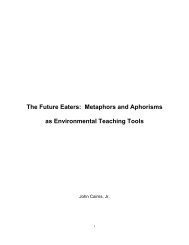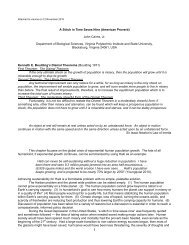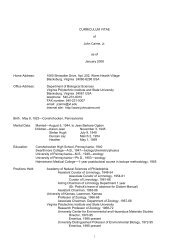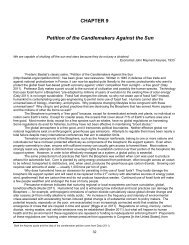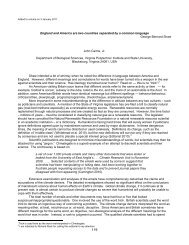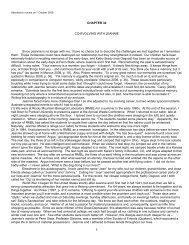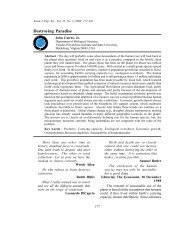View - ResearchGate
View - ResearchGate
View - ResearchGate
You also want an ePaper? Increase the reach of your titles
YUMPU automatically turns print PDFs into web optimized ePapers that Google loves.
Article 34287for interdisciplinary journals. For many years, I collaborated with an optical physicist to developinstrumentation that would enable automated identification of diatoms. 5 Journals sent our papersto either optical physicists of biologists, each incapable of evaluating roughly half of the manuscriptbecause this collaborative work ran contrary to the paradigm of what was appropriate to eitherfield. Finally, one journal found a biologist and a physicist at the same institution to review the paperjointly, and it was accepted. Nevertheless, the difficulties in getting the paper published were considerablygreater than would have occurred within an accepted area of specialization, and the statusresulting from the publication was at least initially considerably less useful than it would havebeen had the publication been within the confines of a well-established discipline.The shifts in funding now occurring will increasingly favor successful interdisciplinary collaborations.In the meantime, young and mid-career professionals must decide whether to communicatein ways that will result in status within the existing disciplinary-dominated system, without concernfor being understood by those in other disciplines or to alter the style of communication to what isnecessary for successful interdisciplinary collaboration, which makes extramural funding moreaccessible, but may endanger the careers of those housed in traditional specialized compartmentsof academic institutions (or even their counterparts in industry and government). It is encouragingthat the difference in communicating styles of males and females described by Tannen appears tobe dwindling, as does the contrast between disciplinary and interdisciplinary modes. During thistransitional period, however, individuals differing too markedly from the communicating style of thegatekeepers are at risk in obtaining both status and security (i.e. tenure and promotion). Thedilemma now faced by environmental professionals, especially those in early and mid-career, isdetermining how much to deviate from established norms for the sake of successful interdisciplinarycollaboration and continued extramural funding and how much to conform to the requirementsof strong disciplinary orientation for survival within their home institution.Taking the long view, it appears that public pressure to solve global problems requiring an interdisciplinaryapproach will surmount disciplinary purity. Meanwhile, institutions that deal with thisproblem are more likely to attract competent professionals interested in solving problems of considerablesocietal interest that require an interdisciplinary approach, and that interdisciplinaryapproach will require a different style of communicating than is adequate within a discipline.ACKNOWLEDGEMENTSI am deeply indebted to Barry Anderson, Catherine Snyder, James R. Pratt and B.R. Niederlehner for readingdrafts of this manuscript. The manuscript was put in the form suitable for Speculations in Science andTechnology by Darla Donald, Editorial Assistant, and the work on the wordprocessor was done by TeresaMoody.REFERENCES1 Tannen, D. 1990. You Just Don’t Understand: Women and Men in Conversation. William Morrow and Co.,Inc., New York2 New Age. 1990. Can we talk? Interview with D. Tannen by P. Taylor. pp.31–107 (not continuous)3 Diamond, J. 1987. Soft sciences are often harder than hard sciences. Discover, August, 34–394 Cairns, J. Jr. 1979. Academic blocks to assessing environmental impacts of water supply alternatives. In:Blackburn, A.M. (ed.), Thames/Potomac Seminars: Proceedings of the Washington Seminar. pp.77–79.Interstate Commission on the Potomac River Basin, Washington, DC5 Cairns, J. Jr., Almeida, S.P. and Fujii, H. 1982. Automated identification of diatoms. BioScience, 32(2), 98–102Received: 5 September 1992; accepted: 14 January 1993 (communicated by A. Lakhtakia).



